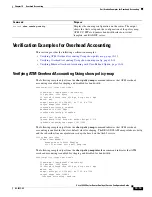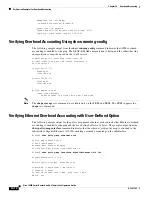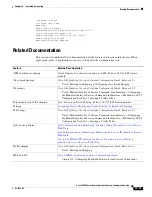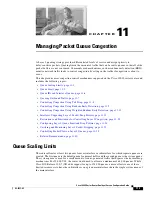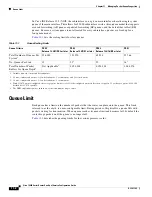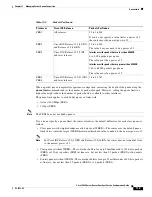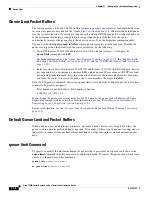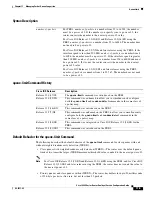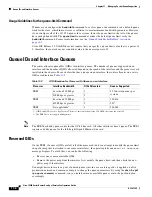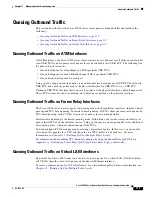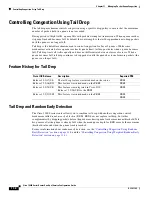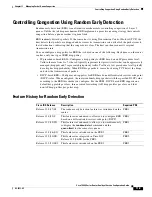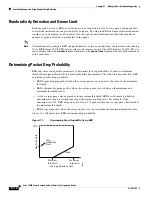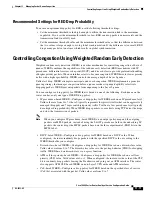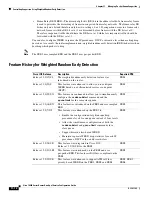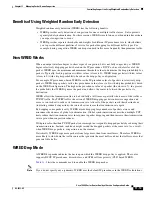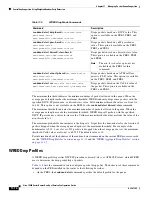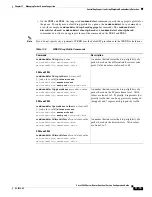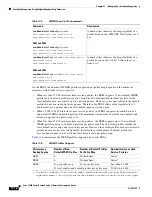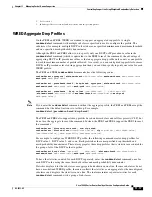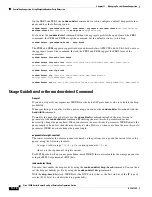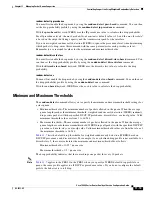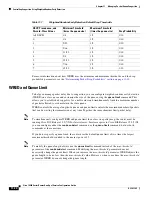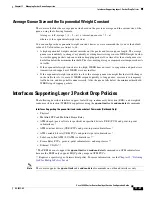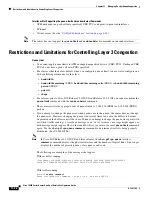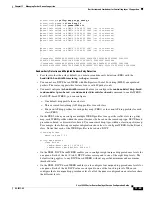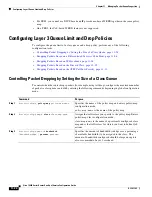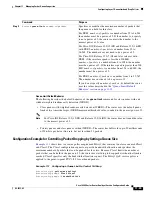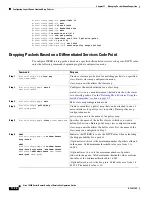
11-11
Cisco 10000 Series Router Quality of Service Configuration Guide
OL-7433-09
Chapter 11 Managing Packet Queue Congestion
Controlling Congestion Using Weighted Random Early Detection
Recommended Settings for RED Drop Probability
To ensure an optimum drop policy for RED, use the following threshold settings:
•
Set the minimum threshold value high enough to utilize the transmission link to the maximum
capability. If you set the minimum threshold too low, RED can drop packets unnecessarily and the
transmission link is not fully used.
•
Set the maximum threshold value and the minimum threshold value so that the difference between
the two values is large enough to avoid global synchronization. If the difference is too small, RED
drops many packets at one time, which results in global synchronization.
Controlling Congestion Using Weighted Random Early Detection
Weighted random early detection (WRED) is another mechanism for controlling congestion of Layer 3
queues. WRED combines the capabilities of the random early detection (RED) mechanism with IP
precedence, differential services code point (DSCP), and discard-class to provide preferential handling
of higher priority packets. When an interface starts to become congested, WRED discards lower priority
traffic with a higher probability. WRED controls the average depth of Layer 3 queues.
Unlike tail drop, WRED attempts to anticipate and avoid congestion. WRED implements a proactive
queuing strategy that manages congestion before a queue reaches its queue depth. By selectively
dropping packets, WRED prevents packets from enqueuing to the Layer 3 queue.
You can configure a drop policy for WRED that is based on one of the following. Each queue on the
router can have only one type of WRED drop policy.
•
IP precedence-based WRED—Configures a drop policy for WRED based on an IP precedence level.
Valid values are from 0 to 7, where 0 typically represents low priority traffic that can be aggressively
managed (dropped) and 7 represents high priority traffic. Traffic at a low precedence level typically
has a higher drop probability. When WRED drops packets, source hosts using TCP detect the drops
and slow the transmission of packets.
Note
When you configure IP precedence-based WRED on an output policy map and the outgoing
packets are MPLS packets, instead of using the 3-bit IP precedence field in the underlying IP
packets, the router drops the MPLS packets based on the three experimental (EXP) bits in the
MPLS label.
•
DSCP-based WRED—Configures a drop policy for WRED based on a DSCP value. When
configured, the router randomly drops packets with the specified DSCP value, according to the
WRED thresholds you configure.
•
Discard-class-based WRED—Configures a drop policy for WRED based on a discard-class value.
Valid values are from 0 to 7. The discard-class value sets the per-hop behavior (PHB) for dropping
traffic. WRED based on discard-class is an egress function.
•
ATM cell loss priority-based WRED—Configures a drop policy for WRED based on a cell loss
priority (CLP) value. Valid values are 0 or 1. When configured, the router uses the value of the CLP
bit to randomly drop packets leaving the Pseudowire and going out an ATM interface. The router
also supports ATM CLP-based WRED on non-Layer2 VPN outbound ATM interfaces.
•
CoS-based WRED—Configures a drop policy for WRED based on the specified class of service
(CoS) bit associated with the packet. Valid values are from 0 to 7.

